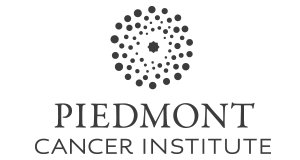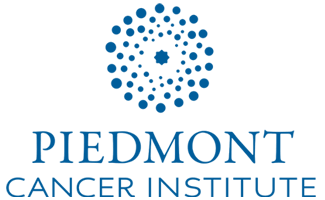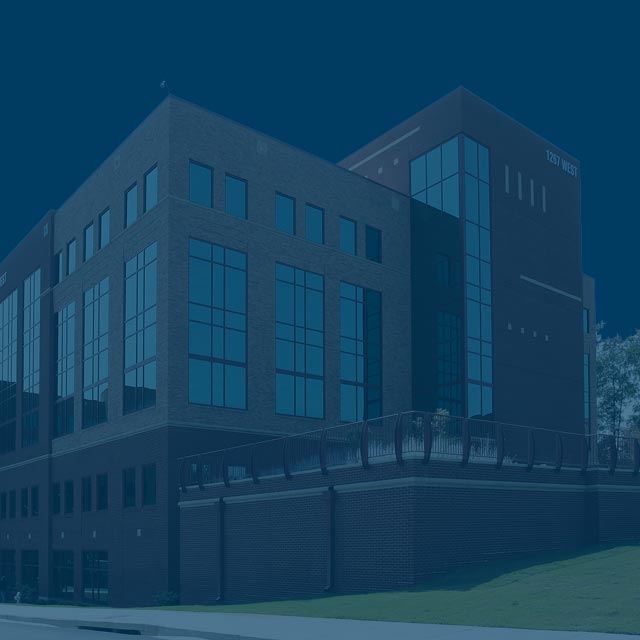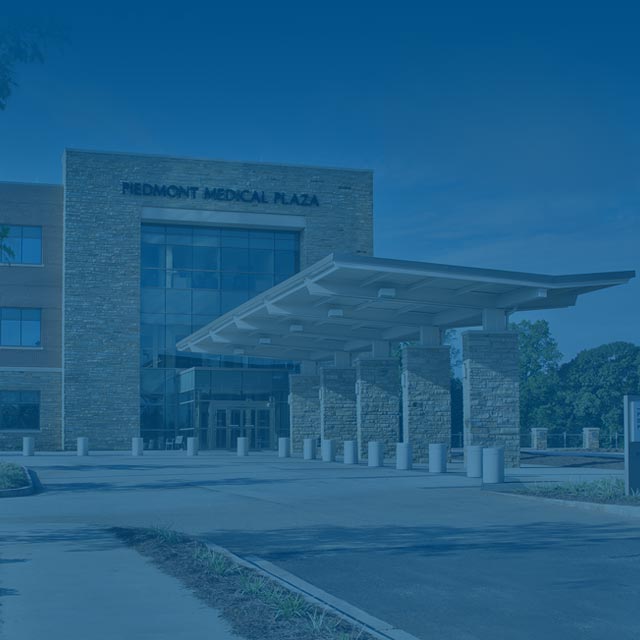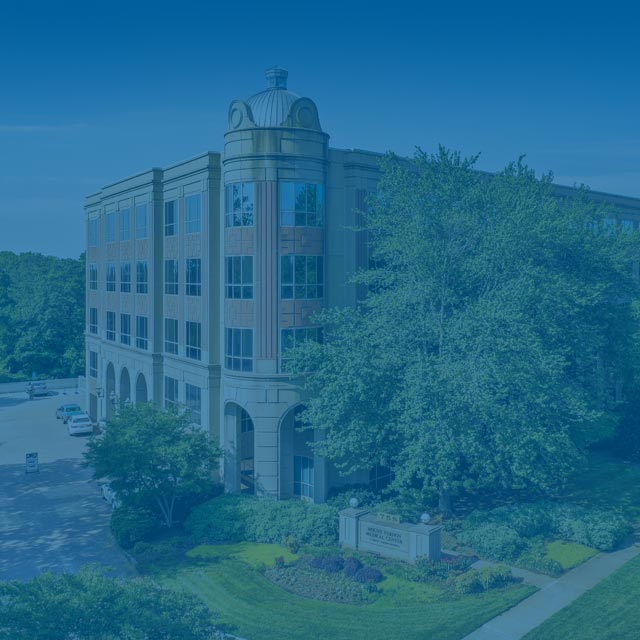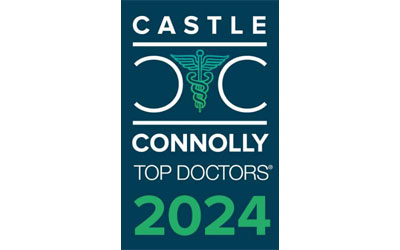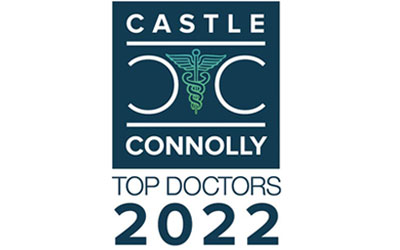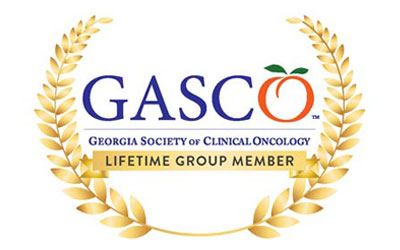Leukemia
General Information About Adult Acute Lymphoblastic Leukemia
Key Points for This Section
- Adult acute lymphoblastic leukemia (ALL) is a type of cancer in which the bone marrow makes too many lymphocytes (a type of white blood cell).
- Previous chemotherapy and exposure to radiation may increase the risk of developing ALL.
- Possible signs of adult ALL include fever, feeling tired, and easy bruising or bleeding.
- Tests that examine the blood and bone marrow are used to detect (find) and diagnose adult ALL.
- Certain factors affect prognosis (chance of recovery) and treatment options.
Adult acute lymphoblastic leukemia (ALL) is a type of cancer in which the bone marrow makes too many lymphocytes (a type of white blood cell).
Adult acute lymphoblastic leukemia (ALL; also called acute lymphocytic leukemia) is a cancer of the blood and bone marrow. This type of cancer usually gets worse quickly if it is not treated.
Normally, the bone marrow makes blood stem cells (immature cells) that develop into mature blood cells over time. A blood stem cell may become a myeloid stem cell or a lymphoid stem cell.
The myeloid stem cell develops into one of three types of mature blood cells:
- Red blood cells that carry oxygen and other materials to all tissues of the body.
- Platelets that help prevent bleeding by causing blood clots to form.
- Granulocytes (white blood cells) that fight infection and disease.
The lymphoid stem cell develops into a lymphoblast cell and then into one of three types of lymphocytes (white blood cells):
- B lymphocytes that make antibodies to help fight infection.
- T lymphocytes that help B lymphocytes make the antibodies that help fight infection.
- Natural killer cells that attack cancer cells and viruses.
In ALL, too many stem cells develop into lymphoblasts or lymphocytes. These cells may also be called leukemic cells. These leukemic cells are not able to fight infection very well. Also, as the number of leukemic cells increases in the blood and bone marrow, there is less room for healthy white blood cells, red blood cells, and platelets. This may cause infection, anemia, and easy bleeding. The cancer can also spread to the central nervous system (brain and spinal cord).
This summary is about adult acute lymphoblastic leukemia. See the following PDQ summaries for information on other types of leukemia:
- Childhood Acute Lymphoblastic Leukemia Treatment.
- Adult Acute Myeloid Leukemia Treatment.
- Childhood Acute Myeloid Leukemia/Other Myeloid Malignancies Treatment.
- Chronic Lymphocytic Leukemia Treatment.
- Chronic Myelogenous Leukemia Treatment.
- Hairy Cell Leukemia Treatment.
Previous chemotherapy and exposure to radiation may increase the risk of developing ALL.
Anything that increases your risk of getting a disease is called a risk factor. Having a risk factor does not mean that you will get cancer; not having risk factors doesn’t mean that you will not get cancer. People who think they may be at risk should discuss this with their doctor. Possible risk factors for ALL include the following:
- Being male.
- Being white.
- Being older than 70.
- Past treatment with chemotherapy or radiation therapy.
- Exposure to atomic bomb radiation.
- Having a certain genetic disorder such as Down syndrome.
Possible signs of adult ALL include fever, feeling tired, and easy bruising or bleeding.
The early signs of ALL may be similar to the flu or other common diseases. A doctor should be consulted if any of the following problems occur:
- Weakness or feeling tired.
- Fever.
- Easy bruising or bleeding.
- Petechiae (flat, pinpoint spots under the skin caused by bleeding).
- Shortness of breath.
- Weight loss or loss of appetite.
- Pain in the bones or stomach.
- Pain or feeling of fullness below the ribs.
- Painless lumps in the neck, underarm, stomach, or groin.
These and other symptoms may be caused by adult acute lymphoblastic leukemia or by other conditions.
Tests that examine the blood and bone marrow are used to detect (find) and diagnose adult ALL.
The following tests and procedures may be used:
- Physical exam and history: An exam of the body to check general signs of health, including checking for signs of disease, such as lumps or anything else that seems unusual. A history of the patient's health habits and past illnesses and treatments will also be taken.
- Complete blood count (CBC): A procedure in which a sample of blood is drawn and checked for the following:
- The number of red blood cells, white blood cells, and platelets.
- The amount of hemoglobin (the protein that carries oxygen) in the red blood cells.
- The portion of the blood sample made up of red blood cells.
- Peripheral blood smear: A procedure in which a sample of blood is checked for the presence of blast cells, number and kinds of white blood cells, the number of platelets, and changes in the shape of blood cells.
- Bone marrow aspiration and biopsy: The removal of bone marrow, blood, and a small piece of bone by inserting a hollow needle into the hipbone or breastbone. A pathologist views the bone marrow, blood, and bone under a microscope to look for abnormal cells.
- Cytogenetic analysis: A laboratory test in which the cells in a sample of blood or bone marrow are looked at under a microscope to find out if there are certain changes in the chromosomes in the lymphocytes. For example, sometimes in ALL, part of one chromosome is moved to another chromosome. This is called the Philadelphia chromosome. Other tests, such as fluorescence in situ hybridization (FISH), may also be done to look for certain changes in the chromosomes.
- Immunophenotyping: A process used to identify cells, based on the types of antigens or markers on the surface of the cell. This process is used to diagnose the subtype of ALL by comparing the cancer cells to normal cells of the immune system. For example, a cytochemistry study may test the cells in a sample of tissue using chemicals (dyes) to look for certain changes in the sample. A chemical may cause a color change in one type of leukemia cell but not in another type of leukemia cell.
Certain factors affect prognosis (chance of recovery) and treatment options.
The prognosis (chance of recovery) and treatment options depend on the following:
- The age of the patient.
- Whether the cancer has spread to the brain or spinal cord.
- Whether the Philadelphia chromosome is present.
- Whether the cancer has been treated before or has recurred (come back).
Stages of Adult Acute Lymphoblastic Leukemia
Key Points for This Section
- Once adult ALL has been diagnosed, tests are done to find out if the cancer has spread to the central nervous system (brain and spinal cord) or to other parts of the body.
- There are three ways that cancer spreads in the body.
- There is no standard staging system for adult ALL.
Once adult ALL has been diagnosed, tests are done to find out if the cancer has spread to the central nervous system (brain and spinal cord) or to other parts of the body.
The extent or spread of cancer is usually described as stages. It is important to know whether the leukemia has spread outside the blood and bone marrow in order to plan treatment. The following tests and procedures may be used to determine if the leukemia has spread:
- Chest x-ray: An x-ray of the organs and bones inside the chest. An x-ray is a type of energy beam that can go through the body and onto film, making a picture of areas inside the body.
- Lumbar puncture: A procedure used to collect cerebrospinal fluid from the spinal column. This is done by placing a needle into the spinal column. This procedure is also called an LP or spinal tap.
- CT scan (CAT scan): A procedure that makes a series of detailed pictures of the abdomen, taken from different angles. The pictures are made by a computer linked to an x-ray machine. A dye may be injected into a vein or swallowed to help the organs or tissues show up more clearly. This procedure is also called computed tomography, computerized tomography, or computerized axial tomography.
- MRI (magnetic resonance imaging): A procedure that uses a magnet, radio waves, and a computer to make a series of detailed pictures of areas inside the body. This procedure is also called nuclear magnetic resonance imaging (NMRI).
There are three ways that cancer spreads in the body.
When cancer cells spread outside the blood, a solid tumor may form. This process is called metastasis. The three ways that cancer cells spread in the body are:
- Through the blood. Cancer cells travel through the blood, invade solid tissues in the body, such as the brain or heart, and form a solid tumor.
- Through the lymph system. Cancer cells invade the lymph system, travel through the lymph vessels, and form a solid tumor in other parts of the body.
- Through solid tissue. Cancer cells that have formed a solid tumor spread to tissues in the surrounding area.
The new (metastatic) tumor is the same type of cancer as the primary cancer. For example, if leukemia cells spread to the brain, the cancer cells in the brain are actually leukemia cells. The disease is metastatic leukemia, not brain cancer.
There is no standard staging system for adult ALL.
The disease is classified as untreated, in remission, or recurrent.
Untreated adult ALL
The ALL is newly diagnosed and has not been treated except to relieve symptoms such as fever, bleeding, or pain.
- The complete blood count is abnormal.
- More than 5% of the cells in the bone marrow are blasts (leukemia cells).
- There are signs and symptoms of leukemia.
Adult ALL in remission
The ALL has been treated.
- The complete blood count is normal.
- 5% or fewer of the cells in the bone marrow are blasts (leukemia cells).
- There are no signs or symptoms of leukemia in the brain and spinal cord or elsewhere in the body.
Recurrent Adult Acute Lymphoblastic Leukemia
Recurrent adult acute lymphoblastic leukemia (ALL) is cancer that has recurred (come back) after going into remission. The ALL may come back in the blood, bone marrow, or other parts of the body.
Treatment Option Overview
Key Points for This Section
- There are different types of treatment for patients with adult ALL.
- The treatment of adult ALL usually has 2 phases.
- Four types of standard treatment are used:
- Chemotherapy
- Radiation therapy
- Chemotherapy with stem cell transplant
- Targeted therapy
- New types of treatment are being tested in clinical trials.
- Biologic therapy
- Patients may want to think about taking part in a clinical trial.
- Patients can enter clinical trials before, during, or after starting their cancer treatment.
- Follow-up tests may be needed.
There are different types of treatment for patients with adult ALL.
Different types of treatment are available for patients with adult acute lymphoblastic leukemia (ALL). Some treatments are standard (the currently used treatment), and some are being tested in clinical trials. A treatment clinical trial is a research study meant to help improve current treatments or obtain information on new treatments for patients with cancer. When clinical trials show that a new treatment is better than the standard treatment, the new treatment may become the standard treatment. Patients may want to think about taking part in a clinical trial. Some clinical trials are open only to patients who have not started treatment.
The treatment of adult ALL usually has 2 phases.
The treatment of adult ALL is done in phases:
- Remission induction therapy: This is the first phase of treatment. Its purpose is to kill the leukemia cells in the blood and bone marrow. This puts the leukemia into remission.
- Post-remission therapy: This is the second phase of treatment. It begins once the leukemia is in remission. The purpose of post-remission therapy is to kill any remaining leukemia cells that may not be active but could begin to regrow and cause a relapse. This phase is also called remission continuation therapy.
Treatment called central nervous system (CNS) sanctuary therapy is usually given during each phase of therapy. Because chemotherapy that is given by mouth or injected into a vein may not reach leukemia cells in the CNS (brain and spinal cord), the cells are able to find "sanctuary" (hide) in the CNS. Intrathecal chemotherapy and radiation therapy are able to reach leukemia cells in the CNS and are given to kill the leukemia cells and prevent the cancer from recurring (coming back). CNS sanctuary therapy is also called CNS prophylaxis.
Four types of standard treatment are used:
Chemotherapy
Chemotherapy is a cancer treatment that uses drugs to stop the growth of cancer cells, either by killing the cells or by stopping them from dividing. When chemotherapy is taken by mouth or injected into a vein or muscle, the drugs enter the bloodstream and can reach cancer cells throughout the body (systemic chemotherapy). When chemotherapy is placed directly into the cerebrospinal fluid (intrathecal chemotherapy), an organ, or a body cavity such as the abdomen, the drugs mainly affect cancer cells in those areas (regional chemotherapy). Combination chemotherapy is treatment using more than one anticancer drug. The way the chemotherapy is given depends on the type and stage of the cancer being treated.
Intrathecal chemotherapy may be used to treat adult ALL that has spread, or may spread, to the brain and spinal cord. When used to prevent cancer from spreading to the brain and spinal cord, it is called central nervous system (CNS) sanctuary therapy or CNS prophylaxis. Intrathecal chemotherapy is given in addition to chemotherapy by mouth or vein.
See Drugs Approved for Acute Lymphoblastic Leukemia for more information.
Radiation therapy
Radiation therapy is a cancer treatment that uses high-energy x-rays or other types of radiation to kill cancer cells or keep them from growing. There are two types of radiation therapy. External radiation therapy uses a machine outside the body to send radiation toward the cancer. Internal radiation therapy uses a radioactive substance sealed in needles, seeds, wires, or catheters that are placed directly into or near the cancer. External radiation therapy may be used to treat adult ALL that has spread, or may spread, to the brain and spinal cord. When used this way, it is called central nervous system (CNS) sanctuary therapy or CNS prophylaxis.
Chemotherapy with stem cell transplant
Stem cell transplant is a method of giving chemotherapy and replacing blood-forming cells destroyed by the cancer treatment. Stem cells (immature blood cells) are removed from the blood or bone marrow of the patient or a donor and are frozen and stored. After the chemotherapy is completed, the stored stem cells are thawed and given back to the patient through an infusion. These reinfused stem cells grow into (and restore) the body's blood cells.
See Drugs Approved for Acute Lymphoblastic Leukemia for more information.
Targeted therapy
Targeted therapy is a type of treatment that uses drugs or other substances to identify and attack specific cancer cells without harming normal cells.
Targeted therapy drugs called tyrosine kinase inhibitors are used to treat some types of adult ALL. These drugs block the enzyme, tyrosine kinase, that causes stem cells to develop into more white blood cells (blasts) than the body needs. Two of the drugs used are imatinib mesylate (Gleevec) and dasatinib.
See Drugs Approved for Acute Lymphoblastic Leukemia for more information.
New types of treatment are being tested in clinical trials.
This summary section describes treatments that are being studied in clinical trials. It may not mention every new treatment being studied. Information about clinical trials is available from the NCI Web site.
Biologic therapy
Biologic therapy is a treatment that uses the patient's immune system to fight cancer. Substances made by the body or made in a laboratory are used to boost, direct, or restore the body's natural defenses against cancer. This type of cancer treatment is also called biotherapy or immunotherapy.
Patients may want to think about taking part in a clinical trial.
For some patients, taking part in a clinical trial may be the best treatment choice. Clinical trials are part of the cancer research process. Clinical trials are done to find out if new cancer treatments are safe and effective or better than the standard treatment.
Many of today's standard treatments for cancer are based on earlier clinical trials. Patients who take part in a clinical trial may receive the standard treatment or be among the first to receive a new treatment.
Patients who take part in clinical trials also help improve the way cancer will be treated in the future. Even when clinical trials do not lead to effective new treatments, they often answer important questions and help move research forward.
Patients can enter clinical trials before, during, or after starting their cancer treatment.
Some clinical trials only include patients who have not yet received treatment. Other trials test treatments for patients whose cancer has not gotten better. There are also clinical trials that test new ways to stop cancer from recurring (coming back) or reduce the side effects of cancer treatment.
Clinical trials are taking place in many parts of the country. See the Treatment Options section that follows for links to current treatment clinical trials. These have been retrieved from NCI's listing of clinical trials.
Follow-up tests may be needed.
Some of the tests that were done to diagnose the cancer or to find out the stage of the cancer may be repeated. Some tests will be repeated in order to see how well the treatment is working. Decisions about whether to continue, change, or stop treatment may be based on the results of these tests. This is sometimes called re-staging.
Some of the tests will continue to be done from time to time after treatment has ended. The results of these tests can show if your condition has changed or if the cancer has recurred (come back). These tests are sometimes called follow-up tests or check-ups.
Treatment Options for Adult Acute Lymphoblastic Leukemia
A link to a list of current clinical trials is included for each treatment section. For some types or stages of cancer, there may not be any trials listed. Check with your doctor for clinical trials that are not listed here but may be right for you.
Untreated Adult Acute Lymphoblastic Leukemia
Standard treatment of adult acute lymphoblastic leukemia (ALL) during the remission induction phase includes the following:
- Combination chemotherapy.
- CNS prophylaxis therapy including chemotherapy (intrathecal and/or systemic) with or without radiation therapy to the brain.
Check for U.S. clinical trials from NCI's list of cancer clinical trials that are now accepting patients with untreated adult acute lymphoblastic leukemia. For more specific results, refine the search by using other search features, such as the location of the trial, the type of treatment, or the name of the drug. General information about clinical trials is available from the NCI Web site.
Adult Acute Lymphoblastic Leukemia in Remission
- Standard treatment of adult ALL during the post-remission phase includes the following:
- Combination chemotherapy with or without tyrosine kinase inhibitor therapy. Chemotherapy with stem cell transplant.
- CNS prophylaxis therapy including chemotherapy (intrathecal and/or systemic) with or without radiation therapy to the brain.
Check for U.S. clinical trials from NCI's list of cancer clinical trials that are now accepting patients with adult acute lymphoblastic leukemia in remission. For more specific results, refine the search by using other search features, such as the location of the trial, the type of treatment, or the name of the drug. General information about clinical trials is available from the NCI Web site.
Recurrent Adult Acute Lymphoblastic Leukemia
Standard treatment of recurrent adult ALL may include the following:
- Combination chemotherapy followed by stem cell transplant.
- Low- dose radiation therapy as palliative care to relieve symptoms and improve the quality of life.
- Tyrosine kinase inhibitor therapy.
Some of the treatments being studied in clinical trials for recurrent adult ALL include the following:
- A clinical trial of stem cell transplant using the patient's own stem cells.
- A clinical trial of biologic therapy.
- A clinical trial of new anticancer drugs.
Check for U.S. clinical trials from NCI's list of cancer clinical trials that are now accepting patients with recurrent adult acute lymphoblastic leukemia. For more specific results, refine the search by using other search features, such as the location of the trial, the type of treatment, or the name of the drug. General information about clinical trials is available from the NCI Web site.
To Learn More About Adult Acute Lymphoblastic Leukemia
For more information from the National Cancer Institute about adult acute lymphoblastic leukemia, see the following:
- Leukemia Home Page
- What You Need to Know About™ Leukemia
- Drugs Approved for Acute Lymphoblastic Leukemia
- Understanding Cancer Series: Blood Stem Cell Transplants
- Bone Marrow Transplantation and Peripheral Blood Stem Cell Transplantation
- Targeted Cancer Therapies
- Understanding Cancer Series: Targeted Therapies
For general cancer information and other resources from the National Cancer Institute, see the following:
- What You Need to Know About™ Cancer
- Understanding Cancer Series: Cancer
- Cancer Staging
- Chemotherapy and You: Support for People With Cancer
- Radiation Therapy and You: Support for People With Cancer
- Coping with Cancer: Supportive and Palliative Care
- Cancer Library
- Information For Survivors/Caregivers/Advocates
For more information about Leukemia, please visit the National Cancer Institute.
